Introduction
In the vast culinary landscape of global gastronomy, stir-frying stands as a testament to the art of rapid cooking that preserves the freshness, texture, and flavor of ingredients. Among the myriad of vegetables that lend themselves beautifully to this technique, potherb mustard (Brassica juncea), commonly known as “snow cabbage” or “leaf mustard” in some regions, holds a unique place. With its bold, slightly bitter taste and crisp texture, potherb mustard is an excellent choice for those who appreciate a robust flavor profile in their stir-fries. This article aims to guide you through the intricacies of stir-frying potherb mustard, ensuring that your dish is not only delicious but also a visual and sensory delight.
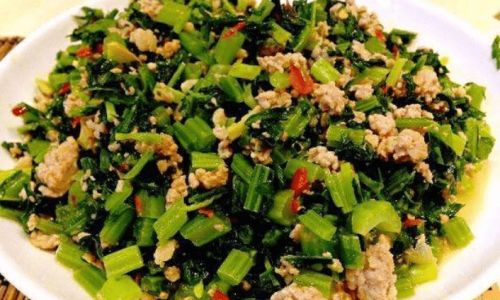
Understanding Potherb Mustard
Before diving into the stir-frying process, it’s crucial to understand the unique characteristics of potherb mustard. This vegetable belongs to the Brassicaceae family, which includes broccoli, cabbage, kale, and other cruciferous vegetables. Potherb mustard is distinguished by its dark green, slightly curly leaves and thick stems. When cooked properly, it offers a nutritious and flavorful addition to any meal, packed with vitamins A, C, K, and various minerals like calcium, iron, and potassium.
The bitterness of potherb mustard stems from its glucosinolates, compounds that break down into mustard oils and other flavorful substances when the vegetable is chewed or cooked. This bitterness can be a turn-off for some, but for those who appreciate its unique taste, it adds depth and complexity to dishes. Furthermore, the texture of potherb mustard remains crisp even after cooking, making it an ideal candidate for stir-fries where quick cooking times are essential.
Selecting and Preparing Potherb Mustard
The first step in creating a successful stir-fry is selecting fresh, high-quality potherb mustard. Look for leaves that are dark green and vibrant, with no signs of yellowing or wilting. The stems should be firm and not overly fibrous. Avoid bunches that have been sitting in water for too long, as this can lead to premature spoilage.
Once you’ve selected your potherb mustard, it’s time to prepare it for stir-frying. Begin by rinsing the leaves and stems thoroughly under cold running water to remove any dirt or debris. Pat them dry using a clean kitchen towel or paper towels. It’s important to remove as much moisture as possible, as excess water can cause the stir-fry to steam rather than sear, resulting in a soggy dish.
Next, separate the leaves from the stems. The stems, being thicker and more fibrous, will require a bit longer cooking time than the tender leaves. You can slice the stems into thin strips or half-moons to ensure they cook evenly. The leaves can be left whole or torn into bite-sized pieces for easier handling during stir-frying.
The Importance of a Hot Wok
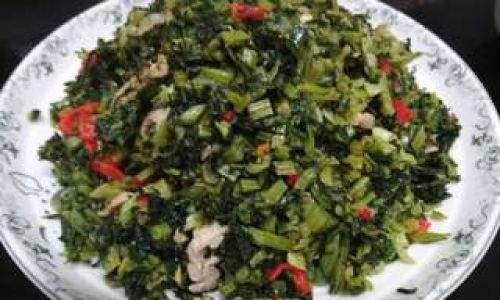
Stir-frying is all about high heat and rapid cooking. A well-seasoned wok or a large, flat-bottomed skillet is essential for achieving the perfect sear on your ingredients. The wok’s shape and material (traditionally cast iron or carbon steel) help distribute heat evenly, ensuring that every piece of potherb mustard is cooked to perfection.
Before adding any oil to the wok, preheat it over high heat until it’s almost smoking. This ensures that the moment you add the oil, it reaches its smoking point quickly, creating an ideal cooking environment. A high smoke point oil, such as peanut, grapeseed, or refined avocado oil, is best suited for stir-frying as it can withstand the high temperatures without breaking down and producing harmful compounds.
Stir-Frying Potherb Mustard: Step-by-Step
Now that you’ve prepared your ingredients and preheated your wok, it’s time to start stir-frying. Here’s a detailed step-by-step guide to ensure your potherb mustard stir-fry is a success:
-
Add Oil and Aromatics:
Pour a small amount of oil (about 2-3 tablespoons) into the preheated wok. Swirl it around to coat the entire surface evenly. Immediately add your aromatics, such as minced garlic, ginger, and/or red chili peppers. These will infuse the oil with their flavors and create a fragrant base for your stir-fry. Stir-fry the aromatics for about 30 seconds until they become fragrant but not burnt. -
Stir-Fry the Stems:
Add the sliced stems of the potherb mustard to the wok, spreading them out in a single layer. Stir-fry for about 1-2 minutes, stirring frequently to prevent burning. The goal is to soften the stems while retaining their crispness. If the wok becomes too dry, you can add a splash of water or chicken/vegetable broth to create a bit of steam, which will help the stems cook more evenly. -
Add the Leaves:
Once the stems have softened slightly, add the leaves to the wok. Stir-fry for another 1-2 minutes, continuing to stir frequently. The leaves will wilt quickly due to the high heat, so keep a close eye on them to prevent overcooking. You want the leaves to be tender but still retain some of their crispness. -
Seasoning:
Now it’s time to season your stir-fry. Add a pinch of salt, a dash of soy sauce or tamari for gluten-free options, and a sprinkle of white pepper. If you like a bit of sweetness to balance the bitterness of the potherb mustard, you can also add a teaspoon of sugar or a drizzle of honey. Stir well to ensure that the seasoning is evenly distributed.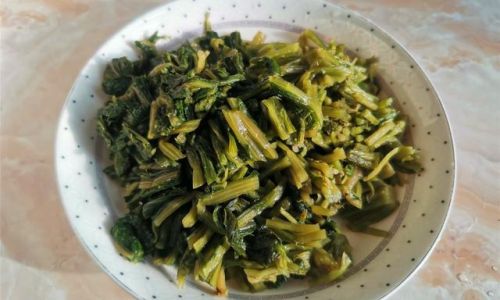
-
Optional Additions:
Stir-fries are highly customizable, so feel free to add other ingredients to your potherb mustard stir-fry. Tofu, shrimp, chicken, or pork can add protein. Mushrooms, bell peppers, or snap peas can provide additional texture and flavor. If you’re adding protein, cook it separately first until it’s almost done, then add it to the wok with the potherb mustard for the final minute of cooking. Vegetables like mushrooms and bell peppers can be added at the same time as the leaves. -
Final Touches:
Once everything is cooked to your liking, give the stir-fry one final stir to ensure all ingredients are well combined. If you prefer a glossy finish, you can add a teaspoon of cornstarch slurry (mixed with a bit of water) to the wok and stir well. This will help thicken the sauce slightly and give your stir-fry a nice shine. -
Serving:
Transfer your stir-fried potherb mustard to a serving dish immediately to prevent overcooking. Garnish with freshly chopped herbs like cilantro, scallions, or sesame seeds for an added touch of flavor and presentation. Serve hot, preferably with steamed rice or noodles to soak up the delicious sauce.
Tips for Perfect Stir-Frying
- Don’t Overcrowd the Wok: Stir-frying requires space for the ingredients to cook evenly. If your wok is too crowded, the temperature will drop, and your stir-fry will steam rather than sear. Cook in batches if necessary.
- Use High Heat: Maintaining a high heat is crucial for achieving the desired texture and flavor in stir-fries. Don’t be afraid to let the wok get very hot before adding oil and ingredients.
- Stir Constantly: Stir-frying requires constant stirring to ensure even cooking and prevent burning. Use a spatula or wok shovel for best results.
- Taste and Adjust: Always taste your stir-fry before serving and adjust the seasoning as needed. Remember, it’s easier to add more seasoning than it is to remove it.
Conclusion
Stir-frying potherb mustard is a delightful way to enjoy this unique vegetable’s bold flavor and crisp texture. By following the steps outlined in this article, you’ll be able to create a dish that balances bitterness with sweetness, crispness with tenderness, and simplicity with complexity. Whether you’re serving it as a side dish or a main course, a well-executed potherb mustard stir-fry is sure to impress even the most discerning palate. Happy cooking!

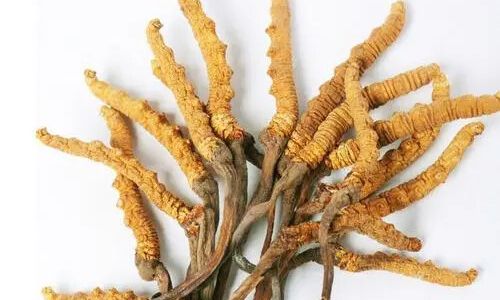
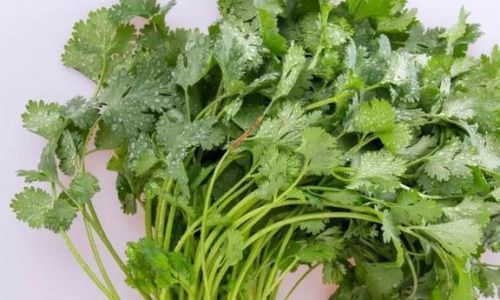
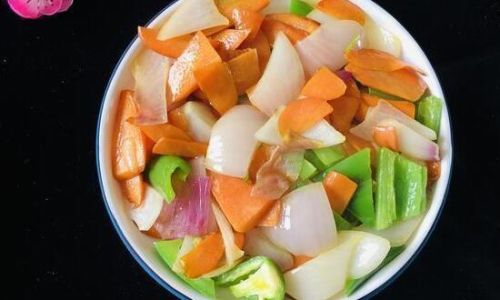
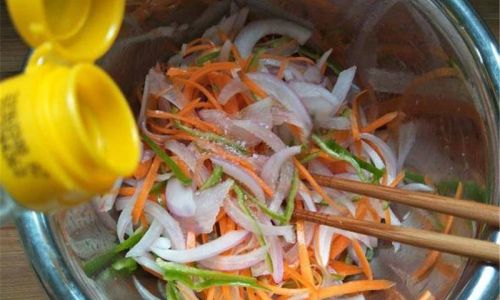
0 comments